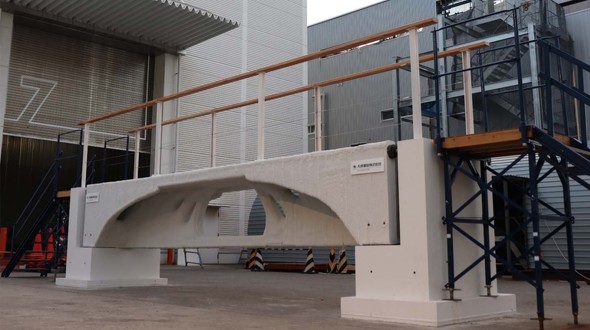While additive manufacturing processes have made huge strides in applications like automotive and aerospace, allowing for functional, lightweight parts to be made for cars and even rockets, and bioprinting in medicine has allowed for enormous strides in tissue engineering, applications in construction may be taking more time than consumers might imagine—and more than some companies may want you to believe also. For instance, the idea of an affordable, stylish-looking home that can be easily customized and quickly made is extremely appealing. These types of stories get a lot of attention and innovative companies may be showstoppers at tradeshows, but the reality is that 3D-printed subdivisions and office buildings are not a reality yet for consumers.
As Japanese companies like Taisei and Taiheiyo Cement continue to evolve further with progressive technology, much greater credence is being given to serious construction projects centered around 3D printing, as well as continuing popular trends in modular and prefabricated homes. The two companies are now working together, along with Actio and Ariake National College of Technology (ANCT) in developing premixed cement material for complex, “highly accurate”, 3D-printed structures that are stable, despite a range of outdoor temperatures.
Advancing on the already developed Digimix cement pre-mix, Taiheiyo is now using a process for creating stable molds meant to withstand the elements. Such hardiness is due to fast-hardening additives, optimized for strength and security in construction. With the resulting T-3DP (Taisei-3D Printing) material, the collaborative group was able to 3D print a bridge that measured 1.2 meters wide, 1 meter high and 6 meters long. The process involved incorporating prestressed concrete steel into 44 concrete 3D-printed components that were then assembled into place. Next, Taisei aims to deploy the technology for the 3D printing of beams and pillars.
The news is particularly important for cementing the viability of additive construction, given the size of the relative partners involved. The Taisei Corporation was founded in 1873 and, with a market cap of roughly $41 billion, it is considered one of the five Japanese “super general contractors”. Though smaller, Taiheiyo is still an $8 billion cement company which boasts 35 percent of the cement market in Japan. Their investment into additive construction suggests that the industry, while it may be in its early stages, is not all hype.
While we may see a number of exciting projects with a great deal of media appeal around the world—the first office in Dubai, the self-sufficient Shamballa village in Italy, homes built quickly via robotics in France—this partnership indicates that additive construction may serve a real purpose beyond flashy media images. In this case, additive construction of cement components is being explored as a possible replacement or supplement for precast concrete structures, of which Taisei is already considered a leader. Due to a well-known history of cost and schedule overruns in the building industry, prefabricated components and modular construction are on the rise as a means of introducing quality control and predictability to the industry. 3D printing’s ability to digitally produce one-off parts would naturally fit into this development.
[Source: Built]